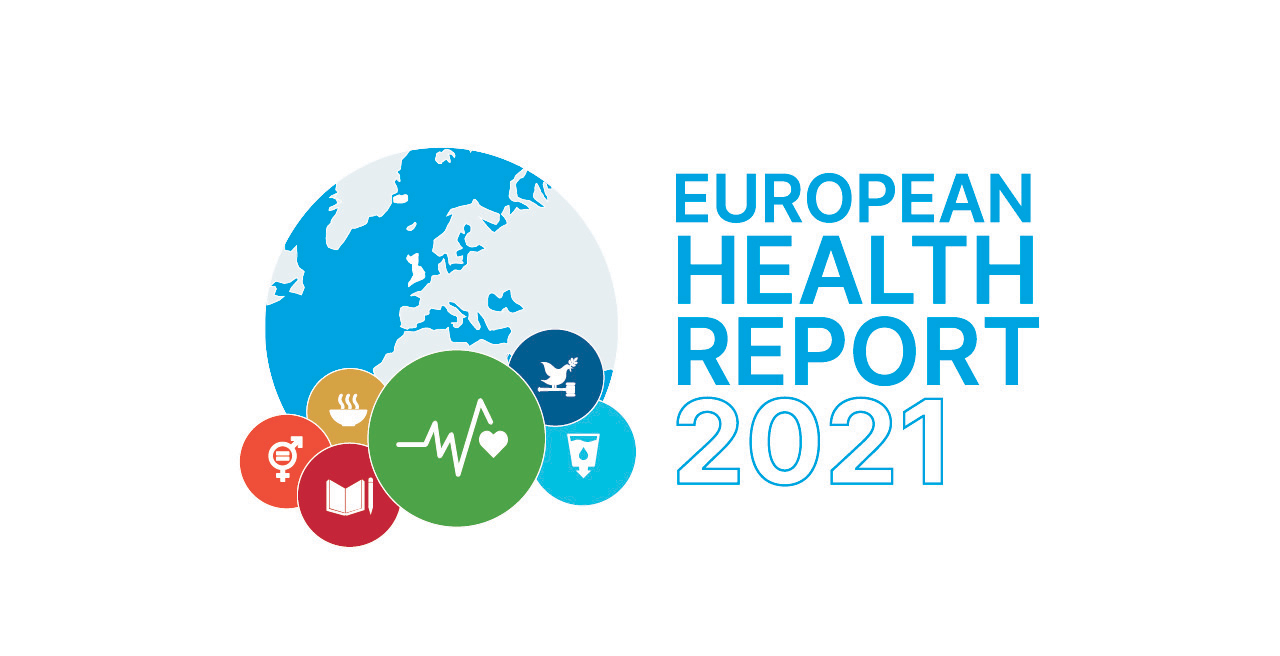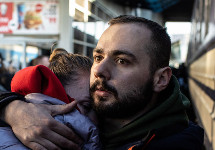COVID-19, influenza, and other respiratory viruses – 2023-2024 autumn and winter season
29 September 2023 | Q&ADr Marc-Alain Widdowson leads the High-threat Pathogen team and the Surveillance and Laboratory pillar of the COVID-19 Incident Management Support Team at WHO/Europe. With autumn and winter comes an increase in influenza and respiratory syncytial virus (RSV) infections, while COVID-19 remains a threat. We spoke to Dr Widdowson to learn what we can do to prepare and protect ourselves and those around us, particularly those who are vulnerable, and what countries can do to tackle influenza, COVID-19 and RSV circulating at the same time – a situation that is very likely to happen this autumn and winter like it did last year.
As is the case every year, it is hard to predict what exactly will happen during the 2023–2024 autumn and winter season.
However, COVID-19 remains an uncertain threat and new variants keep emerging. Across the WHO European Region, COVID-19 continues to cause infections, hospitalizations and deaths.
It is also likely that COVID-19, influenza and RSV will be co-circulating this autumn and winter. This scenario is of concern as it would increase the risk to vulnerable populations and put further pressure on health services.
What’s more, the uptake of recent COVID-19 vaccine booster doses and influenza vaccine among vulnerable populations varies considerably across the Region and remains concerningly low in many countries. Many countries in the Region have a long way to go to reach WHO’s goal of 75% annual influenza vaccine coverage for people at risk.
Influenza is a seasonal contagious respiratory illness caused by the influenza virus that changes every year. This is why it is important to get an influenza vaccine every year. For most people, it causes mild but unpleasant illness, but among vulnerable populations it can lead to severe illness, hospitalization and death.
Those at risk of developing severe disease are older people, pregnant women, people with underlying health conditions (such as heart or lung disease), and children under 5 years. Health workers are at higher risk of being infected due to the nature of their work.
Globally, in any given year, we typically see approximately 3–5 million people suffering from severe influenza and, which may come as a surprise to many, around 650 000 people dying from the disease. Approximately 70 000 of those deaths are in the WHO European Region. Moreover, influenza infection can increase the risk of heart and circulation issues such as heart attack and stroke.
RSV is a seasonal virus that usually causes mild cold-like symptoms but can be dangerous for young children and older adults. It peaks during the October–April period and is a leading cause of acute lower respiratory tract infections in infants and young children.
Common symptoms of RSV include runny nose, decrease in appetite, cough, sneezing, fever and wheezing. Most RSV infections resolve on their own in a week or two, but RSV can also cause more severe infections such as bronchiolitis (inflammation of the small airways in the lung) and pneumonia (infection of the lungs).
WHO/Europe encourages vulnerable populations to get vaccinated against influenza and COVID-19 this season.
Older people, pregnant women, and people with underlying health conditions are at higher risk of developing severe disease due to both influenza and COVID-19. WHO/Europe recommends that they stay up to date on their COVID-19 vaccination and get an influenza vaccine this autumn/winter. As front-line health workers are also at risk of contracting influenza and COVID-19, they should be amongst the first to get vaccinated, especially as this also helps to protect their patients.
WHO/Europe also recommends vaccination against influenza for children under 5 years as they are at higher risk of severe illness or complications.
Whether it’s COVID-19 or influenza, vaccines save lives. They remain the best way to fight these diseases by preventing serious illness or death. Apart from vaccination, there are other things we can all do to increase protection from respiratory viruses and reduce their transmission. It is important for everyone to assess their risk at every step and sustain measures when and where they matter most, as part of their daily routine.
These include:
- staying home if unwell;
- washing hands regularly;
- covering coughs and sneezes with a tissue or bent elbow, and washing or sanitizing hands afterwards;
- bringing fresh air into homes by opening windows or doors whenever possible; and
- wearing a mask in crowded, enclosed or poorly ventilated spaces.
It is best to get vaccinated before the influenza season starts. Influenza vaccination campaigns usually take place in October or November.
It takes 2 weeks from vaccination for protective antibodies against influenza to develop, but it is not too late to get vaccinated if influenza is still circulating. Vaccination increases the chance of being protected from infection and may lessen severe consequences from the disease.
Many countries are or will be encouraging vulnerable populations to get both their influenza vaccine and COVID-19 booster during a single appointment or within the same period.
Influenza vaccines have been safely administered to millions of people for over 6 decades. Our data consistently show that COVID-19 vaccines have saved lives.
Every year, national medicines regulatory authorities carefully examine each influenza vaccine before it is licensed, and systems are in place to monitor and investigate reports of adverse effects following immunization. While some side–effects have occurred, they are typically mild. Severe side–effects are very rare, and the benefits of vaccination far outweigh any risk of side–effects.
To provide an optimal level of protection, influenza vaccines are updated annually based on the observations of scientists monitoring virus strains in circulation earlier in the year. The exact effectiveness of the vaccines depends on several factors, including a person’s age, current health and the strains of the virus that actually end up in circulation during the winter period. Even so, you can expect to be, on average, 60% protected from influenza infection 2 weeks after vaccination (this is the usual time it takes for the vaccine to take effect).
The most common way of making influenza vaccines involves an egg-based manufacturing process that has been used for more than 70 years. The egg-based process produces both inactivated (killed virus) – the most common version that is administered as an injection – and live attenuated (weakened virus) vaccine, which is a nasal spray – this is used mainly in paediatric vaccination programmes.
In recent years, other cell-based influenza vaccines, not using eggs, have been licenced, as have some vaccines which are higher-dose or include an adjuvant. Some of these show improved effectiveness.
No, vaccines cannot give you influenza or COVID-19. On the contrary, they remain the best way to fight these diseases by preventing serious illness or death.
No, the viruses are different and require different vaccines. COVID-19 and influenza vaccines can be safely administered at the same time, but there is no combined vaccine that offers protection against both diseases.
RSV vaccine development has been under way for decades. WHO, in collaboration with other international agencies and expert laboratories, has been developing guidance to advance the research and development of vaccines and monoclonal antibodies. WHO has also been supporting RSV surveillance.
Since May 2023, 2 RSV vaccines have been authorized or recommended for authorization in the United States and the European Union for vaccination of adults aged 60 years and older, and pregnant women (in the latter case, to provide passive vaccination of babies from 0 to 6 months of age). A long-acting monoclonal antibody for infants has also been approved in some high-income countries.
Potential availability of these vaccines and monoclonal antibodies in countries in the near future will depend on the recommendations of each country’s national regulatory authority and national immunization technical advisory group, as well as on manufacturing, product pricing and delivery capacities.
WHO/Europe urges countries to prepare for the autumn and winter season and step up efforts to develop or strengthen their integrated response to COVID-19, influenza and RSV.
We must continue to do our utmost to prevent infections and severe disease from respiratory infections, protect the vulnerable, and bolster health systems to better manage multiple threats.
WHO/Europe has the following recommendations for countries.
- Continue to engage with vulnerable populations to encourage the uptake of COVID-19 and influenza vaccines, as well as to implement protective measures, and to counter false information. Understanding why influenza vaccine and COVID-19 booster uptake remains low amongst vulnerable groups in many countries in the WHO European Region is paramount, as is designing and rolling out strong, targeted programmes and campaigns to reverse this trend.
- Maintain COVID-19 prevention and response infrastructure, and continue to carry out virus tracking, testing, reporting and integrated surveillance.
- Consider administering the influenza vaccine along with the COVID-19 vaccine whenever feasible.
On 29 September 2023, WHO/Europe is launching the campaign “Keeping safe from COVID-19, influenza, and RSV this autumn and winter. Protecting lives. Strengthening health systems.”
The campaign aims to:
- highlight that (1) it is vital for vulnerable populations to stay up to date on their COVID-19 vaccination and to receive the influenza vaccine this autumn/winter; and that (2) it is important that everyone takes protective measures when and where they matter to reduce the risk of infection from respiratory viruses; and
- share best practices of successful protective campaigns, including vaccination, and other initiatives in response to infections from respiratory viruses this autumn and winter.
WHO works on influenza throughout the year. When one season ends, preparedness work for the next season begins. This work includes surveillance and tracking the influenza virus, monitoring the strains identified by laboratories; providing recommendations for the composition of the vaccine each year; surveillance of avian influenza, which can cause human infection; and tracking mortality from influenza and the burden of disease.
WHO provides continued support to countries to tackle COVID-19. While the global emergency has ended, the virus is still circulating, and governments, individuals and communities, health workers and stakeholders should not let their guard down.




